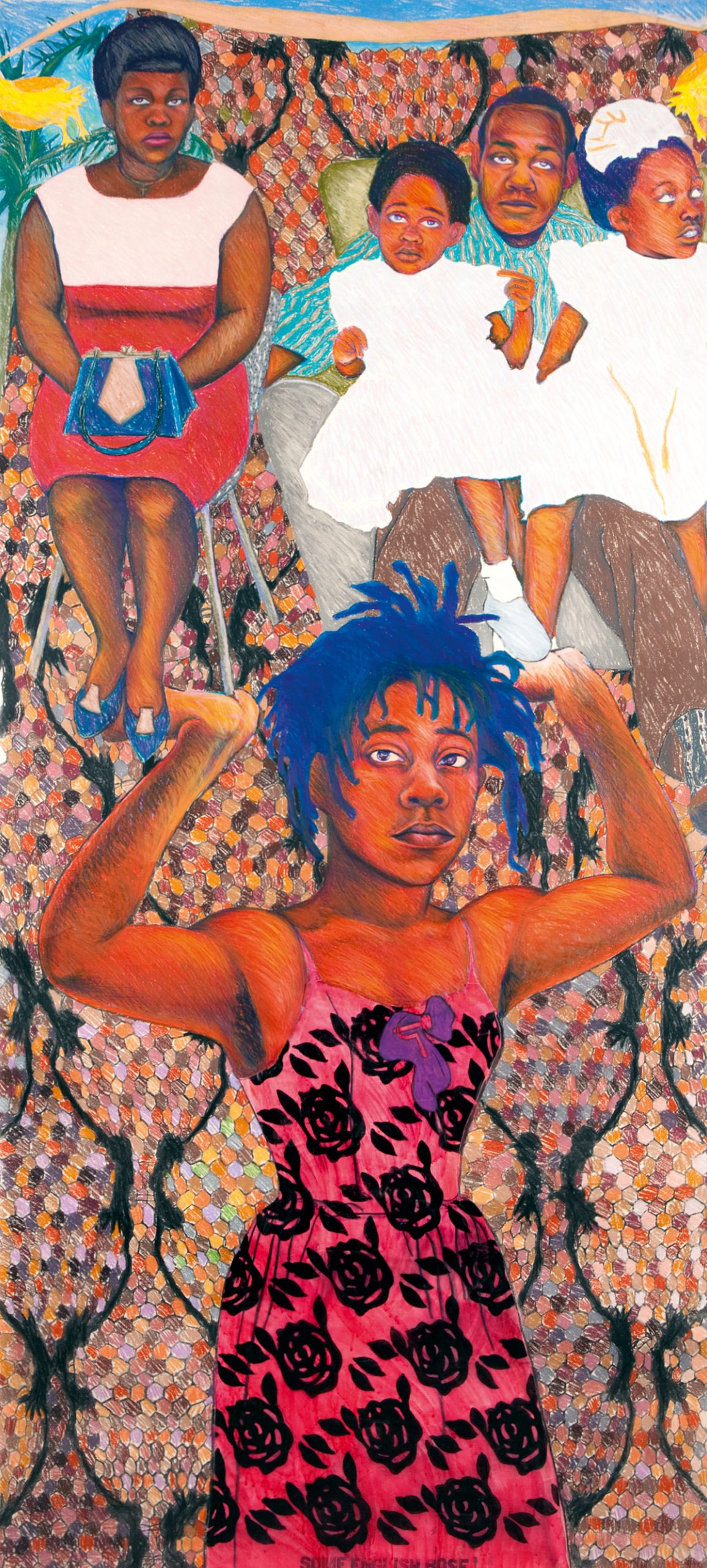My Favourite Painting: Lola Young
Baroness Lola Young chooses a picture by Sonia Boyce thats' 'about the invisibility of black women who neither had a place in feminism nor black liberation movements'.


Baroness Lola Young on She Ain’t Holdin’ Them Up, She’s Holdin’ on (Some English Rose) by Sonia Boyce
‘When I first saw this work by Sonia Boyce RA, I loved it and immediately knew it was significant: it clutched at my heart and brain. In 1986, the art world was still more or less closed to black people’s creative work, except in group shows about “Black Art”.
‘Yes, it’s a self-portrait, but it was also about the invisibility of black women who neither had a place in feminism nor black liberation movements. Sonia literally places us front and centre.
‘Black females are often lumbered with so much historical baggage, it’s a wonder we can stand up: here Sonia shows our strength. So much rests on the mutual support of mothers, sisters, wives, daughters, grandmothers — and it’s all there in her diminutive frame.’
Baroness Lola Young of Hornsey is a crossbench life peer, the founder and co-chair of the All Party Parliamentary Group of Ethics and Sustainability in Fashion and has campaigned for improved legislation on modern slavery.
John McEwen comments on She Ain’t Holdin’ Them Up
Sonia Boyce was born in London, into a ‘working-class community’ with ‘no idea about art school.’ But she drew compulsively, ‘on any surface… tables, walls, on everything’. Mrs Franklin, her secondary-school art teacher, enabled her to go to East Ham College of Art and Technology, from where she attended Stourbridge College (1980–83). Female students were treated as prospective ‘artists’ wives… as a black person, there wasn’t a narrative at all’.
In 1982, the First National Black Art Convention of black artists proved revelatory; the painter Lubaina Himid encouraged artists to make ‘positive images’ of themselves. The young Miss Boyce drew friends, family and childhood experiences, including wallpaper patterns and bright colours associated with the Caribbean or the Windrush generation. Both artists exhibited in ‘Five Black Women’ (Africa Centre, London, 1983) and ‘The Thin Black Line’ (ICA, London, 1985).
Prof Boyce wrote of this self-portrait drawing that the roses, identifiably black, signified ‘femininity’; the ‘beautiful flower’ known for its ‘sharp thorns’ — female ‘fragility’ and ‘strength’. It consciously marked the end of her principally traditional, studio-based, artistic approach and a move to one that was diverse and interactive.
She has become a key figure, artistically and academically, in the now mainstream black-British art scene, her repertoire including photographic, performance and audio-visual art. Public recognition has mounted: MBE (2007); Royal Academician (2016); OBE (2019). She is professor of Black Art and Design at the University of the Arts, London WC1, and will represent Britain at the 59th Venice Biennale, postponed until 2022.
Exquisite houses, the beauty of Nature, and how to get the most from your life, straight to your inbox.
Country Life is unlike any other magazine: the only glossy weekly on the newsstand and the only magazine that has been guest-edited by His Majesty The King not once, but twice. It is a celebration of modern rural life and all its diverse joys and pleasures — that was first published in Queen Victoria's Diamond Jubilee year. Our eclectic mixture of witty and informative content — from the most up-to-date property news and commentary and a coveted glimpse inside some of the UK's best houses and gardens, to gardening, the arts and interior design, written by experts in their field — still cannot be found in print or online, anywhere else.
